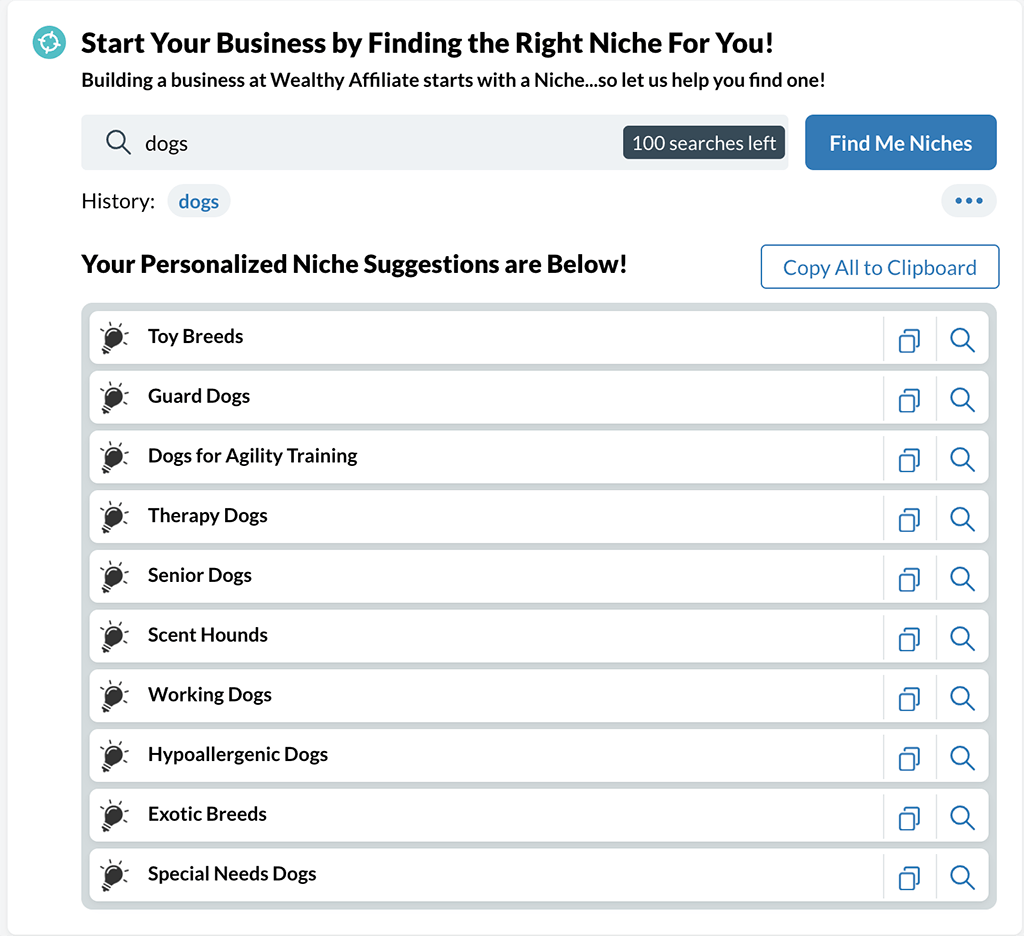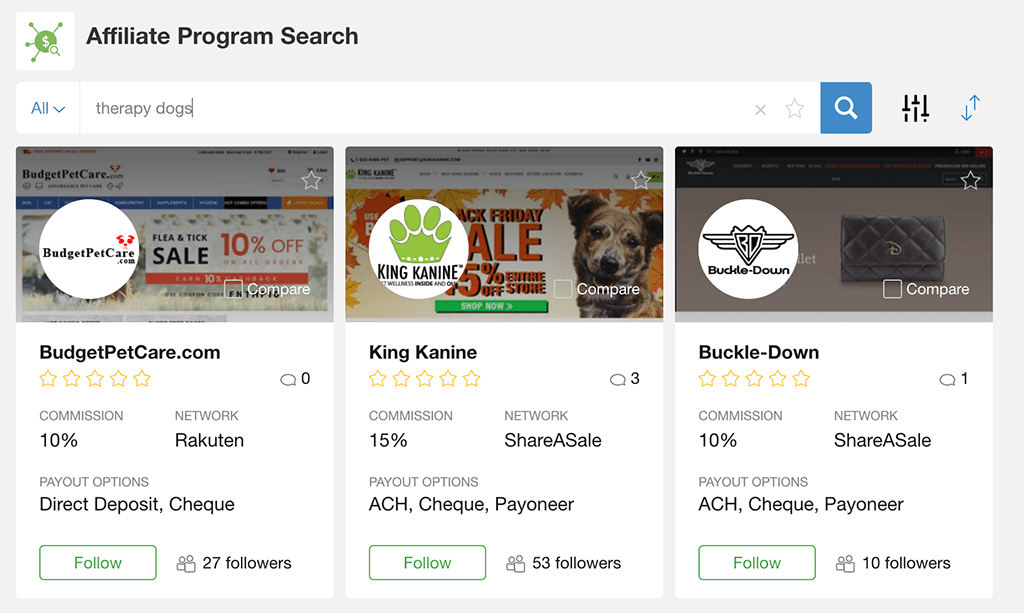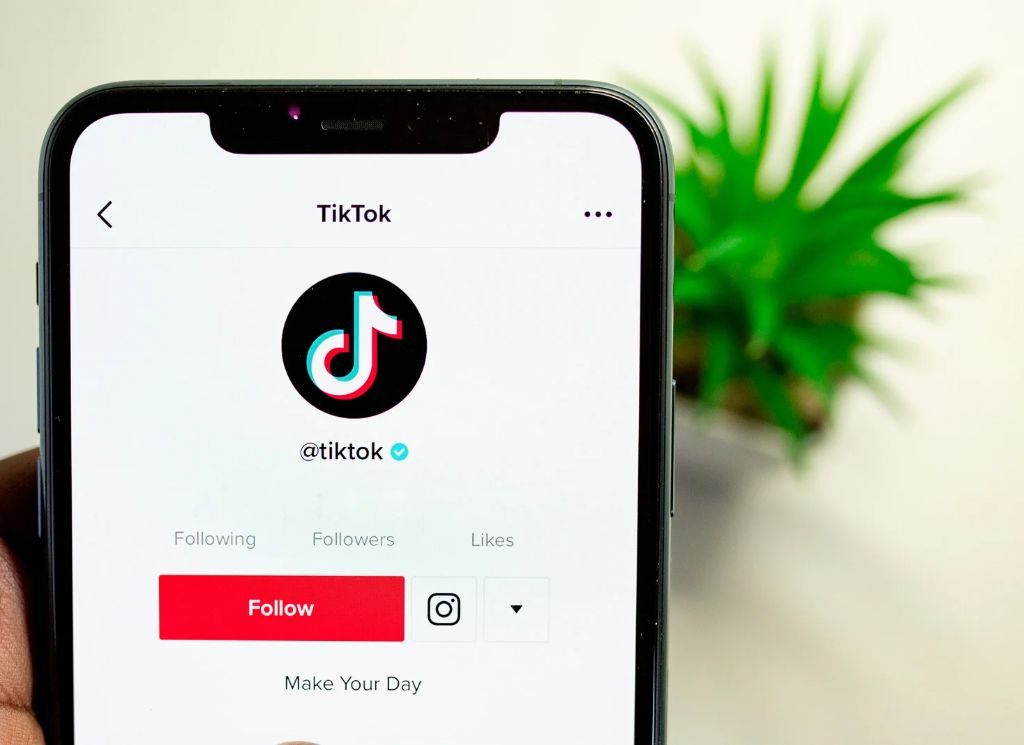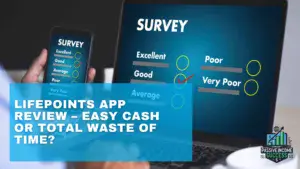Are you looking for a proven strategy to earn passive income from social media? If so, you’re in the right place! In this ultimate playbook, we’ll show you how to leverage the power of social media to generate affiliate income like a pro.
With billions of active users on various social media platforms, the opportunities to make money through affiliate marketing are endless.
Whether you’re a seasoned marketer or a beginner, this playbook will give you practical tips, tools, and techniques to help you succeed in your affiliate marketing journey.
So, let’s dive in and discover how to turn your social media accounts into a lucrative source of income!
Table of Contents
Using Social Media to Generate Affiliate Income
Affiliate marketing on social media is an effective way for businesses to reach a larger audience and increase their customer base. It involves the promotion of products or services through the use of social media channels, such as Facebook, Twitter, Instagram, and YouTube, to create a network of affiliates who are incentivised to promote and sell the company’s products or services.
This type of marketing has grown in popularity over the years, as businesses can get immediate feedback and see how their campaigns are performing in real-time. Additionally, affiliates can be used to help increase brand awareness and build relationships with potential customers.
the benefits of using social media for affiliate marketing
There are many benefits to using social media to generate affiliate income… Here’s some to give you an idea…
- Reach a Wider Audience: With billions of users on social media platforms, you can reach a wider audience than you could through other marketing channels.
- Increase Engagement: Social media is a highly engaging platform, which means you can increase engagement with your audience and build a stronger relationship with them.
- Build Trust: By sharing valuable content and promoting products that you genuinely believe in, you can build trust with your audience and establish yourself as an authority in your niche.
- Lower Costs: Compared to other marketing channels, social media is a relatively low-cost way to promote affiliate products and earn commissions.
- Diversify your Income Streams: Social media provides an additional channel for generating affiliate income, allowing you to diversify your income streams and reduce your reliance on any one channel.
- Easy to Track Performance: Many social media platforms provide analytics tools that allow you to track the performance of your affiliate links and measure your success.
- Enhance your Brand Visibility: By leveraging social media to promote affiliate products, you can increase your brand visibility and attract more followers, potentially leading to more opportunities for revenue and growth.
Overall, social media provides a powerful platform for affiliate marketers to reach new audiences, engage with followers, and earn passive income through affiliate promotions.
Finding Your Niche
Regardless of how you want to go with your affiliate marketing campaigns, you need to start with a niche.
A niche, in terms of affiliate marketing, is your topic. What you will be focusing your content and campaigns on. But you want to start specific and targeted, hence why it’s a niche.
If you try and stay too broad, you will end up being a small fish in a large pond, as you could be promoting products against some big competitors…
That is why I suggest you start small and then expand as your authority in your niche grows… I’ve written a guide that helps you find your niche…
But in short, you want to pick a topic that you can offer help and advice on. There are some products that you can offer as a solution. That would appeal to your target audience… I’ll get onto that in a moment…
I would suggest you think about a hobby or passion you have and go from there… Think about it. If you’re going to start a business, why not do it in something you already enjoy spending time doing?
Many hobbies have products to promote them. It shows people are willing to spend money on that hobby. They also have many questions about that hobby.
Finding a niche within that requires a little more research. But you could use the tool I use from Wealthy Affiliate. As part of their membership, you can use their Niche Finder tool.

This will suggest many niches that are aligned with an interest you type in… Let’s see what it comes up with as a personalised suggestion for a dog lover…

By coming up with a niche, you can then start thinking about the target audience and then their questions or problems they might have… This will all help with your campaigns and personalising them to your audience.
Understanding your target audience
Here are some tips on how to identify your target audience:
Define your Niche: Start by identifying the specific niche or topic that your blog or business focuses on. For example, if you’re running a fitness blog, your niche may be weight loss, bodybuilding, or yoga. Once you have a clear understanding of your niche, you can begin to narrow down your target audience.
Conduct Market Research: Use tools like Google Analytics, social media analytics, and online surveys to gather data about your audience. This will help you understand their demographics, interests, and behaviour.
Create Buyer Personas: Based on the data you’ve collected, create detailed profiles of your ideal customers. These buyer personas should include information about their age, gender, income, location, interests, challenges, and goals.
Analyse your Competition: Study your competitors’ target audience and see how they’re reaching and engaging with them. This can help you identify gaps in the market that you can fill with your content or products.
Test and Iterate: As you begin to attract an audience, pay attention to their feedback and adjust your strategy accordingly. Continuously test and iterate to ensure that you’re delivering the content and products that your target audience wants and needs.
Fnding the Right Affiliate Product to promote
Once you understand your niche and your target audience, then you can come up with the right affiliate products to promote… Affiliate Marketing is all about connecting the right customer with the right products in a non-salesy way…
Your social media campaigns will rely on your doing this with relevant content that leads them to relevant products.
Places like Amazon, which offers an affiliate program, can give you an idea of what products are available to promote that are tailored to your target audience and niche.
But their commission rates aren’t exactly high… There is a wide world out there of affiliate programs for you to explore…
You can use Google search to find others… But if you want efficiency, might I suggest you check out Wealthy Affiliate’s affiliate program tool?
This gives you hundreds of relevant affiliate programs for any given niche. Here’s an example below… I’ve used the “therapy dogs” niche example from the Niche Finder tool above.

There are many suggestions for affiliate programs and products that, if relevant, you could use in your affiliate campaigns.
But if you’re still struggling, I’ve put together a guide that helps you find affiliate programs for your niche.
Turn Your Passion into Profits
Choosing Your Social Media Platforms
There are several social media platforms that are good for affiliate marketing. The best platform(s) for you will depend on your niche and audience, as well as your own preferences and skills. Here are some of the most popular social media platforms used for affiliate marketing:
- YouTube
- TikTok
Let’s run through them with a little more detail to help you understand what you are up against with each of them. They all of their pros and cons, which we have listed below…

Instagram is a highly visual platform that’s perfect for promoting products and showcasing lifestyle and fashion products. You can share affiliate links in your bio, use swipe-up links in your stories, and tag products in your posts.
Pros
- Reach large audiences with targeted advertising
- Ability to track results and optimise campaigns
- Create relationships with followers and potential customers
Cons
- Instagram‘s algorithm can make it difficult to reach targeted audiences
- Affiliate marketing requires a lot of time and effort to be successful
- Affiliate marketing can be competitive and difficult to stand out from other affiliates
YouTube

YouTube is a video-sharing platform that’s ideal for tutorials, product reviews, and educational content. You can include affiliate links in your video descriptions, annotations, and in-video sponsorships.
Pros
- Reach a large audience
- Easy to create content
- Low cost compared to other platforms
Cons
- Low conversion rate
- High competition
- Adsense revenue can be unreliable

Facebook is a versatile platform that’s great for promoting affiliate products through organic posts, paid ads, and groups. You can also create a Facebook Page for your affiliate business and share affiliate links with your followers.
Pros
- Low cost to run campaigns
- Ability to target specific audiences
- Large user base
Cons
- Difficulty standing out from other affiliates
- Constant algorithm changes
- Limited customer service support

Pinterest is a visual search engine that’s perfect for promoting products and services through pins and boards. You can share affiliate links in your pins, use affiliate links in promoted pins, and join group boards to reach a wider audience.
Pros
- Easy-to-use platform
- Ability to showcase products visually
- Can reach a large audience quickly
Cons
- Highly competitive
- Can be difficult to track conversions
- Difficult to build an engaged following
TikTok

Pros
- TikTok has a large user base, providing a potential audience for affiliate products
- It makes it easier to create content that can be shared and spread quickly
- It is a great platform for creating dynamic and engaging video content.
Cons
- It can be difficult to stand out from the other content on TikTok
- TikTok’s algorithm can make it hard to get your content seen
- It can be difficult to measure the success of your affiliate campaigns on TikTok
It’s important to note that each platform has its own rules and guidelines for promoting affiliate products, so be sure to review the terms and conditions carefully to avoid anything that might get you or your account banned.
Additionally, you should focus on creating high-quality, valuable content that resonates with your audience and builds trust, rather than solely promoting products.
Building Your Social Media Presence
There is very little chance of you making money without building your social media presence to a reasonable level… So, let’s give you some pointers on how to grow that audience…
Setting up and optimising your social media profiles
Here are some tips on how to ensure you optimise your social media profile for trust building with your audience…
- Create a Professional Profile Picture: Your profile picture should be a professional headshot that accurately represents your brand. This is especially important for affiliate marketers as potential customers will be viewing your profile before making a purchase
- Fill Out Your Profile: Make sure to fill out all the fields in your profile, including your bio, website, and contact information. This will help customers find you and will make your profile look more professional
- Post Content Regularly: You should be creating and sharing content regularly to stay on top of mind with your audience. This could be a mix of content such as news, advice, and promotions
- Engage with Your Audience: Interacting with your followers is a great way to build relationships and increase engagement. Respond to comments and questions, and share content that your followers may find interesting or helpful
- Track Your Progress: Track your progress using analytics tools such as Google Analytics or Facebook Insights. This will help you understand which content is performing well, and which strategies are working best.
Create high-quality, engaging content that resonates with your audience
The key focus with your content needs to be all about relevancy. Once you understand your audience, you can then ensure your content is designed just for them. High-Quality content that is relevant to your audience will do wonders for your affiliate campaigns, as well as grow your audience…
- Research Your Audience: Take the time to get to know your audience and understand their interests and needs. This will help you create content that resonates with them and is more likely to be shared
- Focus on Quality: Don’t be tempted to produce content for the sake of it. Quality should always be the focus, so make sure you are creating valuable, useful content that your audience will appreciate
- Use Visuals: Visuals are a great way to make content more engaging. Use images, videos and infographics to add interest and make your content more appealing.
Growing your social media following and engagement
Growing your following is just about repeating what is working and understanding what isn’t, so you know where you invest your time better… Here are a few more tips…
- Engage with Followers: Don’t just post and leave. Respond to comments, repost followers’ content, and reply to messages. This will show your followers that you care about their feedback and opinions
- Use Hashtags: Using relevant hashtags can help you reach a wider audience, as people will be able to find your posts even if they don’t follow you
- Cross-Promote: Promote your social media accounts on your website, blog, and email list. This will help you reach more people and increase your follower count
- Promote your Content: Paid promotion can help you reach a larger audience, as it can put your content in front of people who would otherwise not know about it
Turn Your Passion into Profits
Finding and Joining Affiliate Programs
Once you have a good social media presence and a following, it’s time to start finding some affiliate products to promote…
Finding the best affiliate programs for your niche and audience
Finding the best affiliate products in your niche is crucial to your success as an affiliate marketer. Here are some tips to help you find the best affiliate products:
Know your Niche: Before you start looking for affiliate products, make sure you have a deep understanding of your niche. This will help you identify the types of products that are most relevant and useful to your audience.
Research Affiliate Networks: Look for affiliate networks that specialise in your niche. Some popular affiliate networks include ShareASale, Commission Junction, and Amazon Associates. These networks have a wide variety of products in various niches and can be a great starting point for finding affiliate products.
Use Keyword Research: Use keyword research tools to identify the most popular keywords and phrases in your niche. This can help you identify the types of products your audience is searching for and interested in.
Check out your Competitors: Look at your competitors’ websites and see what products they’re promoting. This can give you an idea of what’s working well in your niche and what products are in high demand.
Use Product Review Sites: Product review sites like CNET, Wirecutter, and Consumer Reports can help you identify popular products in your niche. These sites provide in-depth reviews of products, which can help you decide if a product is a good fit for your audience.
Try the Products Yourself: Before you promote a product, it’s a good idea to try it out for yourself. This will help you ensure that the product is high-quality and something that you feel comfortable recommending to your audience.
By using these tips, you can find the best affiliate products for your niche and start generating income through affiliate marketing.
Applying to become an affiliate
Here are some tips to help you apply for affiliate programs successfully:
Choose Affiliate Programs that Fit your Niche: Look for affiliate programs that offer products or services that are relevant to your niche. This will help ensure that you’re promoting products that your audience is interested in and increase the chances of generating income.
Build a Strong Online Presence: Before you apply for affiliate programs, make sure you have a strong online presence, including a website or blog with high-quality content. Many affiliate programs require you to have an established website or blog before you can apply. (Need a website, check out my guide here)
Provide Accurate and Detailed Information: When you apply for an affiliate program, provide accurate and detailed information about your website, blog, or social media channels. This information will help the affiliate program assess whether your audience is a good fit for their products or services.
Be Transparent: Be transparent about your affiliate marketing activities with your audience. Disclose that you’re using affiliate links and explain how they work. This will help build trust with your audience and increase the likelihood of them making a purchase through your affiliate links.
Follow the Affiliate Program’s Rules: Make sure you read and understand the affiliate program’s terms and conditions before applying. Follow the program’s rules, including any requirements for promoting their products or services.
Be Patient: Some affiliate programs may take several days or even weeks to review your application. Be patient and follow up if you haven’t heard back after a reasonable amount of time.
By following these tips, you can increase your chances of getting accepted into affiliate programs and start generating income through affiliate marketing.
Promoting Affiliate Products on Social Media

The key to being successful with promoting affiliate products on social media is relevancy… and some good looking social media posts that bring them in…
Creating high-converting social media posts that promote affiliate products
Creating engaging content for affiliate products on social media can be challenging, but it’s essential to drive engagement and conversions. Here are some tips to help you create engaging content:
Focus on Value: Your content should provide value to your audience. Whether it’s helpful tips, informative articles, or entertaining videos, make sure that your content is relevant to your audience’s interests and needs.
Use Visuals: Visuals are more engaging than text alone. Use high-quality images, videos, and infographics to grab your audience’s attention and showcase the product’s features and benefits.
Be Authentic: Your audience wants to hear your authentic voice and perspective. Don’t just regurgitate product descriptions or sales pitches. Share your personal experiences with the product, how it’s helped you, and why you think it would be valuable to your audience.
Create Tutorials and How-To Guides: Creating tutorials and how-to guides are an effective way to showcase the product’s features and benefits and provide value to your audience. Use your content to demonstrate how the product works, how to use it effectively, and what benefits it provides.
Encourage User-Generated Content: Encourage your audience to share their experiences with the product and tag you in their posts. This can help increase engagement and provide social proof that the product works.
Use Call To Action: Use clear calls to action (CTAs) in your content to encourage your audience to take action, such as clicking on an affiliate link, making a purchase, or sharing your post.
By following these tips, you can create engaging content for affiliate products on social media that drives engagement and increases conversions. Remember, the key is to provide value to your audience and showcase the product’s benefits authentically and engagingly.
Using influencer marketing and collaboration to amplify your reach
Influencer Marketing is a type of social media marketing that focuses on leveraging key individuals, or influencers, to drive your brand’s message to the larger market.
Rather than marketing directly to a large group of consumers, influencer marketing focuses on targeting key individuals within the target market and working to get the message out through their followers and fans.
The main goal of influencer marketing is to build a strong relationship with the influencer and to create content that will be shared with their followers and fans.
This then allows you to expand your reach with your affiliate promotions, as you are working with a wider circle than just your followers.
Implementing a content strategy that maximises your affiliate income
It isn’t enough to just create great-looking content. You need to think about your content strategy to work on what works well… Understanding the thought process of your target audience and the reasons why they would want to buy the products or services you will be promoting will certainly help… Here are some tips to help you…
- Create Content that is Useful and Relevant: The key to creating successful content is to make sure it is useful and relevant to your target audience. Create content that can help them solve a problem or answer a question they have
- Promote your Content: Once you have created your content, you need to promote it so that your target audience can find it. Promote your content on social media, in emails, through SEO and other channels to reach your target audience
- Track and Measure your Results: Regularly track and measure your results to see how your content is performing. This will allow you to adjust and tweak your content strategy to maximise your affiliate income.
Tracking and Analysing Your Performance
If you’re going to be using social media for your affiliate marketing promotions, you need to understand what is working well as well as what isn’t working well… So, let’s discuss tracking those affiliate links and sales…
Tracking your affiliate links and sales
Most companies that offer affiliate programs offer amazing suites to help you monitor and track your affiliate links and sales. The easier they make it for you to track, the better they have the opportunity to make more sales.
Affiliate marketing relies on the relationship between the affiliate and the merchant. If an affiliate program had a crappy reporting tool, it would put affiliates off.
You want to ensure you monitor your links and the performance of your promotions so that you can focus on creating more content that works…
- Use UTM Tracking Codes: UTM codes are a great way to track the performance of your affiliate links on social media. UTM codes are snippets of text that can be added to the end of your affiliate link. They provide detailed information about the source, medium, and campaign associated with the link. This data can then be used to measure the success of your affiliate link on social media
- Use Analytics Tools: Analytics tools such as Google Analytics and Social Media Analytics can be used to track the performance of your affiliate links on social media. These tools provide detailed information about the source, medium, and campaign associated with the link, as well as the number of clicks and conversions generated
- Leverage Existing Tracking Solutions: Many affiliate networks offer their tracking solutions, which can be used to track the performance of your affiliate links on social media. These solutions provide detailed information about the source, medium, and campaign associated with the link, as well as the number of clicks and conversions generated.
Optimising your social media content and affiliate promotions
By using the analytic tools, you can fully understand what is working well (meaning you create more like it) and what isn’t working well (you stop wasting your time on similar promotions).
Scaling Your Social Media Affiliate Marketing Business
Once you have got a good handle on what is working well, with your social media promotions. Then you can start thinking about scaling your business through automation or even outsourcing certain tasks…
Automating your social media content and promotion
There are several options you have for automating your social media content and its promotion, here are a few to give you an idea…
- Use a Social Media Scheduling Tool: There are many social media scheduling tools available that allow you to create, schedule, and publish content in advance. This helps to streamline your social media content production process and ensures that your content is published consistently throughout the week
- Use a Content Curation Tool: Content curation tools are a great way to speed up social media content production. These tools allow you to quickly search through the web to find relevant content to share with your audience. This can help to save you time as you don’t have to manually search for content
- Automate Your Social Media Posts: You can also automate your social media posts using a tool such as IFTTT or Zapier. These tools allow you to set up automated posts that are triggered by specific events or actions. This helps to ensure that your content is published timely and consistently
- Utilise a Social Media Management Platform: Social media management platforms allow you to easily manage all of your social media accounts from one dashboard. Many of these platforms also offer features to help you automate content production, such as scheduling posts, curating content, and managing multiple accounts.
Outsourcing tasks to grow your business
If you are doing really well with your affiliate promotions, you could then consider outsourcing certain tasks to continue expanding your business. Such as:
- Hire a Virtual Assistant: A virtual assistant (VA) can manage your social media accounts, respond to customer service inquiries, post content, schedule posts, and more
- Hire a Social Media Manager: A social media manager can develop and implement a social media strategy, create content, manage campaigns, track and analyse performance, and more
- Outsource Content Creation: You can outsource content creation to freelance writers, graphic designers, and videographers
- Outsource Graphic Design: Graphic designers can create content for your social media accounts, such as infographics and visuals
- Outsource Photography: You can outsource photography to professional photographers to create high–quality images for your social media accounts
- Outsource Video Production: You can outsource video production to video editors and producers to create video content for your social media accounts
- Outsource Influencer Marketing: You can outsource influencer marketing to agencies and platforms to help you reach a larger audience.
Scaling your income and achieving financial freedom
By ensuring you are constantly creating great quality content that is ideal for your target audience. By ensuring your are providing helpful and engaging content for your following. You can start to see that your income allows you to invest some it into outsourcing particular tasks.
Then it will naturally flow into being able to provide you a considerable affiliate income and even think about financial freedom!!
How cool is that?
Using Social Media to Generate Affiliate Income - Conclusion
In conclusion, affiliate marketing can be a lucrative way to generate income by promoting products and services through social media. By following the strategies outlined in this playbook, you can find the best affiliate products in your niche, identify your target audience, and create engaging content that drives engagement and conversions.
Remember to always prioritise your audience’s needs and interests, and be transparent about your affiliate marketing activities. Build trust with your audience by providing value through high-quality content and authentic recommendations.
By applying the tips and strategies outlined in this playbook, you can unlock the full potential of affiliate marketing and turn your social media channels into a profitable income stream. So why wait? Start implementing these strategies today and watch your affiliate income grow!
Thanks for checking out this guide. I hope you found it useful. If you have any questions or insights you wish to share, please write them in the comment section below. I will get back to you as soon as I can… ;). If you feel up for sharing, please do…







Automation and Outsourcing is massive on social media. Thank you for your detailed article. Finding your niche will most likely lead you to find your passion and as added bonus, you get paid for it.
I also learnt when talking to your audience use language that is friendly, approachable and empathetic to make your potential customers feel comfortable and confident. You do not want to sound robotic. I have started following you for more articles.
Hey Angee,
Thanks for checking out my blog post… Glad you found it useful! Being able to harness social media for any business is ideal. With the huge numbers of people on these platforms, all are willing to engage in something they love. Why wouldn’t you?
Automation can definitely be a boon to have with your social campaigns. Although, as for outsourcing. I would wait until you know what is working first. You don’t want to be paying people without being able to give them the exact target audience that is engaging with your posts.
Regards,
John
Diversifying my income stream is really important. If I rely only on organic searches on google, bing and yahoo, I’m subject to algorithm changes. So I like that you are talking about and showing us how to leverage wider audiences on social media.
I already outsource my writing and I have excellent writers. But I don’t know what platforms to hire virtual assistants. I know there’s Fiverr, but everyone claims to be an “influencer” or a “social media manager” and they really aren’t. Where can I hire quality help for my blogs?
Hey Shalisha,
Thanks for checking out my blog post.
There are many online platforms where you can hire a virtual assistant for your blog. Here are a few suggestions:
Upwork: Upwork is a popular freelancing platform that connects businesses with freelancers from all over the world. You can easily find virtual assistants with a variety of skills and experience levels on Upwork.
Freelancer: Freelancer is another well-known freelancing platform where you can find virtual assistants. You can post a job listing and receive bids from freelancers who are interested in working with you.
Fiverr: Fiverr is a platform where freelancers offer their services starting at just $5. You can find virtual assistants on Fiverr who can help with a variety of tasks related to your blog.
Onlinejobs.ph: If you’re looking for a virtual assistant based in the Philippines, Onlinejobs.ph is a great platform to consider. Many virtual assistants on this platform are highly skilled and have experience working with bloggers.
LinkedIn: LinkedIn is a professional networking platform where you can search for virtual assistants who have the skills and experience you’re looking for. You can also reach out to your network for recommendations.
When hiring a virtual assistant, it’s important to thoroughly review their qualifications, experience, and references. You should also conduct interviews to assess their communication skills and ensure they’re a good fit for your blog.
Hiring a virtual assistant (VA) for your blog can be a great way to offload some of the administrative tasks and free up time to focus on creating content and growing your blog. Here are some tips for hiring a decent virtual assistant:
Determine your needs: Before hiring a VA, you should first determine what tasks you want them to handle. Make a list of the tasks you need help with, such as email management, social media scheduling, research, writing, etc. This will help you find a VA with the right skillset for your needs.
Look for experience: When hiring a VA, look for someone who has experience in the tasks you need help with. Ask for examples of their previous work or client testimonials to get a sense of their experience level.
Check references: Ask for references from the VA and reach out to their previous clients to get a sense of their work ethic, reliability, and communication skills.
Conduct interviews: Conduct interviews with potential VAs to get a sense of their personality, work style, and communication skills. This will help you determine if they are a good fit for your blog and if you will be able to work well together.
Set clear expectations: When hiring a VA, it’s important to set clear expectations from the beginning. This includes outlining the tasks you need help with, your communication preferences, deadlines, and payment terms.
Consider communication skills: Communication is key when working with a VA. Make sure the VA you hire is responsive and communicates clearly and effectively. This will help ensure that tasks are completed on time and to your satisfaction.
Start with a trial period: Consider starting with a trial period to ensure that the VA is a good fit for your blog and that they can handle the tasks you need help with.
By following these tips, you can find a decent virtual assistant for your blog who can help you grow and manage your blog more effectively.
Hope this helps…
Regards,
John